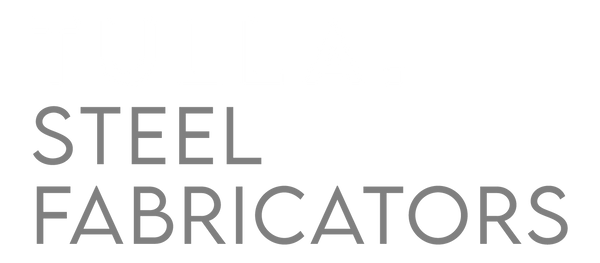The Importance of Regular Inspections for Steel Fabricated Products
Share
Steel fabricated products are everywhere, from the frame that holds up your workshop to the railings on a bridge. But even the toughest-looking steel structure isn’t invincible. Skip regular check‑ups and you risk costly damage, safety hazards or shortened service life.
In this blog, we’ll explore why welding inspection and a solid welding inspection checklist matter so much, what to look for, how often checks should happen, and who’s best placed to carry them out, so you can protect your investment, stay safe, and get the most from your steelwork.
Why We Should Inspect Steel Fabricated Products
Every steel structure, no matter how well built, is subject to wear and environmental stress. Here's why inspections should never be left off the schedule.
Keeping People Safe
A crack in a support beam or a hidden welding flaw can turn routine load‑bearing into a major accident risk. Early spotting—whether corrosion, faulty welds or fatigue makes all the difference.
Avoiding Huge Repair Bills
Fixing a small rust patch or nip‑and‑tuck weld is far cheaper than shutting down production or replacing an entire span. Regular inspections keep costs manageable.
Extending Every Structure’s Life
By spotting early signs of metal fatigue or surface decay, you protect the steel’s core strength. Over time those small fixes pay off in longer-lasting assets.
Ensuring Performance Stays On Point
Structural steel in manufacturing or buildings must carry precise loads. Consistent checks mean it’s always performing as intended.
Keeping Onside With Standards
Many applications, such as bridges, plant flooring, and pressure vessels, are regulated and require scheduled inspections. Compliance means reliability.
The Peace of Mind Factor
Knowing that a reliable welding inspection checklist is followed gives stakeholders confidence that safety and durability aren’t being left to chance.
What to Keep an Eye On During Inspections
Each inspection should be thorough, with focus areas that cover all high-risk zones. Here are the key elements:
- Corrosion Signs: Look for reddening, flaking, or pits. Moisture‑trapped areas, weld seams or coating failures are common spots. For more on protecting steel, check out our blog on preventing corrosion.
- Cracks & Metal Fatigue: Tiny hairline fractures can grow under stress. Look near joints, high‑load zones or bends.
- Welding Flaws: Undercuts, porosity, lack of fusion or overlaps are red‑flags in welds. The welding inspection stage should call these out.
- Deformations: Bends, twists or buckling hint at overloading or previous incidents.
- Loose Bolts or Fixings: Fasteners that have shifted or worked loose can transfer stress to welds or plates. Make sure everything stays firmly tight.
- Coating Checks: Peeling paint, chipped galvanisation, or exposed bare metal let corrosion in. A solid protective finish must be intact; see our advice on choosing the right finish for longevity and durability.
How Often Should You Inspect?
Inspection timing depends on use and risk:
- Light‑duty indoor structures might be good for annual checks.
- Outdoor or heavy‑use steel bridges, cranes, plant platforms should be reviewed quarterly or bi‑monthly.
- Harsh environments (salt‑air, chemical works) deserve even more frequent rounds. Engage qualified professionals to assess your specific needs and set up a suitable schedule.
Who’s Best to Inspect Steel Fabrication?
You’ll want someone qualified and experienced with steelwork inspection. Certified welding inspectors, structural engineers or in‑house specialists with training can spot subtle issues before they escalate.
Structured programmes tend to perform better than ad‑hoc checks—standard reports, date‑stamped findings and action logs help track changes over time. That’s why quality control is crucial to a solid maintenance regime.
Why Record‑Keeping Matters
Every inspection should be logged: when it happened, what was found, what remedial steps were taken and who signed off. This history helps plan repairs, spot patterns, comply with regulators, and show your steel’s integrity is under careful watch.
Making Safety and Longevity Habitual
If you treat inspections as optional, sooner or later, a minor issue will become a major headache. But by building a routine using a welding inspection checklist, checking for corrosion, retightening bolts, and renewing coatings, you will lock in durability, save on repair costs, and protect people who rely on your structures.
For any organisation managing steel assets, from industrial plants to public‑sector builds, regular inspections aren’t a box‑ticking exercise; they’re the backbone of safety, performance and longevity.
At Tulla Steel Fabricators, we’re as hands‑on with inspection programmes as we are with welding and fabrication. Need guidance on setting up inspection routines or putting together a welding inspection checklist? Our team is ready to help you keep your steel strong, stable and secure.
